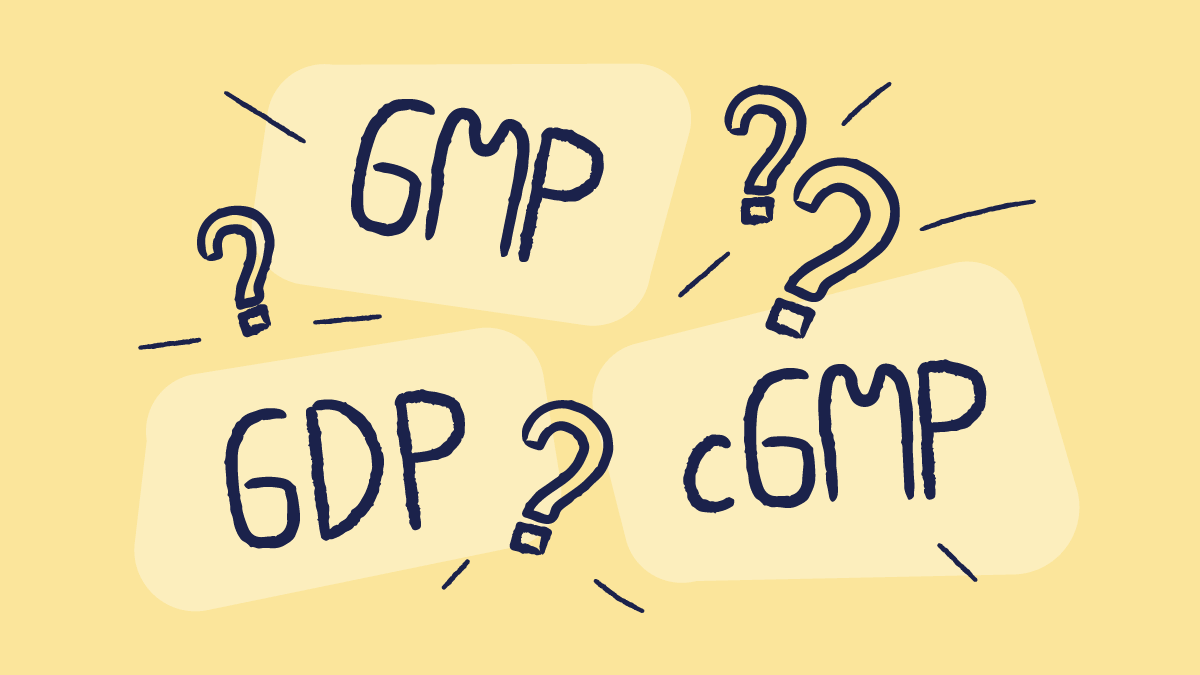
If you have ever sat through an FDA inspection, you know the atmosphere. It is quiet, tense, and strangely similar to watching someone test a structure you built with your own hands.
You might feel confident in your SOPs, your training records, and your CAPAs, but all it takes is one overlooked detail to turn a smooth inspection into a Form 483… and then into a Warning Letter.
And once a Warning Letter is out, it is out for everybody - your competitors, partners, investors, and every quality team on LinkedIn.
I have spent the last few years talking to quality peers across pharma, and the patterns behind the FDA warning letters 2024 are familiar. The issues behind recent FDA warning letters are rarely new. They are consistent, predictable, and avoidable. The companies that avoid them are not perfect; they are simply better at staying in control.
In this FDA warning letters 2025 outlook, I will walk you through the FDA warning letters trends from the most recent years, the most common FDA findings, and the practical steps to avoid joining the next batch of pharmaceutical companies receiving enforcement letters.
You will also see where Scilife's eQMS makes the difference between scrambling to fix issues and staying inspection-ready year-round in 2026 and beyond.
Key takeaways
FDA Warning Letter trends that should make you pay attention in pharma manufacturing facilities

When I talk with pharma quality teams, one thing is always clear: FDA inspection outcomes are the true test of your quality system. They are the primary benchmark for assessing a manufacturer’s compliance with current Good Manufacturing Practices (CGMP).
Through its cGMP surveillance inspection program, the FDA gathers a wealth of information about a site’s ability to ensure the identity, strength, quality, and purity of every drug product released to the U.S. market.
The FDA classifies facility inspections into one of three final categories.
Types of FDA warning letters:
- "No Action Indicated" (NAI),
- "Voluntary Action Indicated" (VAI)
- "Official Action Indicated" (OAI).
This classification is determined by the FDA's evaluation of the facility's adherence to Current Good Manufacturing Practice (CGMP) regulations, taking into account the evidence gathered during the inspection and the company's subsequent response to any identified observations.
The trend is clear without needing in-depth analysis: the FDA has intensified its focus following pandemic-related delays, and the pharmaceutical industry is once again facing rigorous inspection.
The CDER Site Catalog serves as the official inventory of inspected and approved drug manufacturing facilities worldwide.
Between fiscal year 2020 (FY2020) and fiscal year 2024 (FY2024), the total number of sites increased from 4,221 to 4,619 in FY2024, representing a steady 9% growth over four years and peaking at 4,819 sites in FY2023.
While the U.S. continues to represent roughly 40% of all inspected facilities, the majority of sites under FDA oversight are located abroad — particularly in India, China, Germany, Canada, and other European countries. In FY2024, the agency reported that over 62% of its drug quality inspections took place at foreign facilities.
Although that statistic always surprises the industry, it underscores a crucial reality: pharmaceutical quality today is global.
Whether your plant is in New Jersey or Barcelona, the same expectations apply. The FDA’s reach is worldwide, and inspection readiness is no longer something you prepare for once a year. It is a mindset you maintain every single day.

These risk areas show up repeatedly across FDA Warning Letters 2024, and understanding them is essential for prevention in 2026.
How to respond to FDA warning letters and 483 observations. Get best practices and tips!
Now, let’s dive into the key FDA warning letter trends one by one:
FDA inspections are back
If we step back and look at the last five years, it is clear that FDA Warning Letters 2024 set the stage for a tough FDA Warning Letters 2025 cycle.
After the slowdown during the pandemic, the agency has ramped up its global oversight again, and the data tells a clear story.
According to FDA annual reports, the number of quality-related warning letters has been steadily rising since FY2020, reaching its highest level in FY2024. That year alone, the FDA issued 105 warning letters for human drug quality issues, an 11% jump from the previous year.
What’s driving this increase? It is not that the FDA suddenly changed the rules.
Rather, it is a sign that the agency is catching up on deferred inspections and focusing its attention on the most critical risks. Instead of casting a wide net, inspectors are now zeroing in on facilities with weak inspection histories, repeat deficiencies, or signs of data integrity concerns.
Foreign sites dominate inspections
Interestingly, more than 62% of FDA drug quality inspections in FY2024 targeted foreign manufacturing sites, a trend that continued directly into FDA warning letters 2025. The global supply chain is now a regulatory minefield.
FDA’s message is simple: geography will not save you. Whether your facility is in the U.S., India, or Germany, the FDA expects the same standards of documentation, oversight, and control.
The trend suggests that 2026 will not be gentler. I often hear peers who feel that the FDA’s expectations have become tougher, and they’re right. The agency has little patience for reactive compliance or surface-level fixes. Its focus has shifted to systemic performance: how well your quality system actually works when pressure hits.
The message behind these trends is simple but powerful. The FDA isn’t looking for perfect companies; it is looking for transparent, well-controlled ones. The companies that respond quickly, document properly, and learn from their own gaps are the ones that stay off the warning letter list year after year.

Remote evaluations remain one of pharma’s biggest compliance risks
When I review recent FDA warning letters, one trend stands out immediately. The agency is focusing its attention where the risks are highest. Between FY2020 and FY2024, the FDA has relied heavily on targeted compliance tools, such as Section 704(a)(4) record requests, to identify sites that might otherwise slip under the radar.
High-risk manufacturing sectors continue to draw disproportionate scrutiny
API manufacturers—specifically those serving compounding markets—continue to be disproportionately cited. Only 18% of these manufacturers accounted for 72% enforcement actions in FY2024.
From my perspective, that imbalance should worry every company that depends on outsourced materials. It's a high-risk area that will appear in FDA warning letters in 2025 and beyond.
Many smaller or overseas suppliers are still adjusting to FDA expectations for documentation, testing, and traceability. In particular, the FDA has raised red flags about inadequate impurity testing and incomplete process validation for high-risk materials.
Geography also plays a role. China and India remain key areas of focus, and a sharp increase in warning letters from both regions has been driven by deficiencies uncovered through Section 704(a)(4) record reviews.
These remote assessments often revealed incomplete or inconsistent cGMP documentation. In fact, more than 60% of import alerts added in FY2024 were linked directly to these record requests.
What this tells us is that FDA oversight no longer depends solely on in-person inspections. Whether you were operating a sterile API plant in Europe or managing a supplier network in Asia, remote regulatory assessments were part of the new normal. Ignoring or delaying a records request doesn’t just raise questions; it practically invites enforcement action.
The bottom line is clear. The FDA is focusing on systemic control, data credibility, and global supply chain reliability. Companies that treat inspections like periodic events are the ones getting blindsided.
FDA warning letters 2025: The most common FDA GMP violations in pharma and how to avoid them
Whenever I read through recent FDA warning letters, I notice the same story repeating itself. There’s a common theme for both FDA warning letters 2024 and FDA warning letters 2025. The problems are not hidden deep in some obscure and complex regulations, but rather the basics that everybody knows about.
The same core GMP requirements that have been around for decades continue to trip up companies year after year.
FDA warning letters rarely describe isolated mistakes. Instead, they reveal deeper quality system failures, the kind that develop slowly over time, often unnoticed until an inspection exposes them. In my experience, these issues come down to one thing: organizations failing to translate their written procedures into consistent daily practice.
Here are the recurring topics that keep showing up across pharma manufacturing sites:
Inadequate response to Form 483 observations
FDA findings
A surprising number of organizations waste their 15-day response window by sending generic statements. The FDA wants proof, not promises.
- Responses that lack root cause analysis
- CAPA without clear owners or timelines
- “We will correct this,” promises with no evidence
- Missing documentation to support completed actions
Key lessons
Always approach a 483 as if it were a regulatory submission. Create a clear CAPA plan, assign ownership, track progress, and provide evidence. Transparency builds trust. Be specific, vague promises will not do the job.
How Scilife helps
Scilife’s CAPA and change control workflows ensure every issue is tracked, investigated with assigned owners, and deadlines are met. Automated reminders and audit trails create a clear record of accountability that prevents overdue actions. Full audit trails prove completion and effectiveness.
Inadequate Quality Control oversight and missing procedures
FDA findings
Every warning letter that mentions the QU is essentially saying the company’s quality culture collapsed.
I’ve seen how this happens in practice. As production pressure grows, documentation and review fall behind. But when the Quality Unit loses authority or visibility, small lapses quickly become systemic failures.
- Quality Unit (QU) fails to exercise its responsibilities
- QU is not reviewing or approving investigations
- Outdated or missing SOPs
- Batches released without complete testing
- Deviations closed without proper root cause analysis
Key lessons
Empower the QU. Ensure all processes are supported by current SOPs. Written procedures must match reality. Your QU must keep independence even under production pressure. Every deviation needs a documented investigation, not a quick fix.
How Scilife helps
Scilife’s document control and training solutions keep procedures current and accessible, automatically manage version changes, and ensure staff retraining whenever updates occur. Retraining is mandatory when SOPs change. The Quality KPIs dashboard gives the QU a real-time view of overdue tasks: open deviations, CAPAs, trainings, etc. Scilife’s eQMS controls approval chains for deviations and investigations.
Data integrity FDA warning letters
FDA findings
Data integrity continues to be the FDA’s biggest compliance focus, and rightly so.
- Missing audit trails
- Shared user credentials
- Backdated results
- Unvalidated systems
- Gaps in metadata or incomplete raw data
If the data is not trustworthy, nothing in the quality system is. Under 21 CFR 211.68(b), all computerized systems must be validated, secure, and audit-trail capable. In 2025, the FDA is not just looking for technical compliance, it is assessing whether your data culture supports transparency and traceability.
Key lessons
- Data integrity is not a software feature; it is a culture. Regularly audit your systems for data integrity.
- Every entry must be contemporaneous, attributable, legible, original, and accurate.
- Validation is a lifecycle, not a one-time event.
How Scilife helps:
Scilife’s eQMS platform is fully 21 CFR Part 11 compliant. It maintains unalterable audit trails, secure role-based access logins, and verified electronic signatures. Each change, entry, and approval is traceable, ensuring that records are accurate, contemporaneous, and inspection-ready.
Weak supplier qualification and component testing
FDA findings
Supply chain failures remain a leading cause of enforcement. The FDA continues to cite firms for relying on supplier Certificates of Analysis (COAs) without verification and for missing impurity testing for high-risk components.
Many companies assume that trusted suppliers will always deliver compliant materials until an inspection proves otherwise. The FDA expects independent identity testing and robust supplier oversight, especially for APIs and excipients sourced abroad.
Key lessons
- High-risk components require independent verification.
- Supplier qualification must be documented, updated, and risk-based.
- Performance monitoring should be ongoing, not annual.
How Scilife helps:
Scilife’s eQMS supplier management tool centralizes supplier qualification, linking quality events and audit findings to approved supplier profiles, and schedules requalification automatically. Integrated deviation and CAPA tracking ensure that supplier-related issues are addressed systematically and traceably.
Inadequate process validation and weak CAPA effectiveness checks
FDA findings
Process validation remains a recurring weakness. The FDA keeps citing firms that fail to demonstrate:
- Insufficient evidence of process control
- Validation executed with incomplete protocols
- Cleaning validation skipped or outdated
- CAPAs closed without demonstrating actual effectiveness
This is where scientific justification and documentation need to work hand in hand.
Key lessons
- Validation must follow the full lifecycle—DQ, IQ, OQ, PQ, and continued process verification.
- CAPAs must define measurable success criteria.
- Effectiveness checks should use data, not assumptions.
How Scilife helps:
With Scilife's eQMS, equipment lifecycles can be managed by combining validation activities, CAPAs, and risk assessments in one centralized, traceable system. Additionally, it integrates with deviation tracking and provides documented evidence that CAPA has been effective.
Conclusion
Warning Letters rarely arrive as surprises. They arrive because the earlier signals are ignored.
Behind almost every recent FDA warning letter sits the same pattern: incomplete investigations, weak documentation, late actions, outdated procedures, manual workarounds, or data that simply does not hold up under scrutiny.
The FDA warning letters 2024 were no accident, and the same is true for FDA warning letters 2025.
The FDA’s expectations in 2026 are clear. Companies must demonstrate control, transparency, and reliability every day. Not only when an inspector is on site.
The organizations that thrive are those that treat inspections as learning moments, not audits to fear. Strong organizations invest in systems and tools that connect people, data, and processes; they document what matters; and they make quality a shared responsibility, not a department’s burden.
Scilife Tip:
So, if there’s one takeaway from all these warning letters, it is this: your quality system should work for you, not against you. Build it to be transparent, proactive, and scalable. Because the companies that do are the ones that stay audit-ready, confident, and trusted by regulators worldwide.
That is where Scilife’s eQMS changes the entire dynamic. Instead of reacting to quality problems, you create a quality ecosystem that prevents them. Instead of chasing documents across shared drives, you open a validated record in seconds. Instead of relying on memory, you rely on automated workflows. Instead of scrambling before inspections, you stay inspection-ready.
Because at the end of the day, avoiding warning letters is not about fear of enforcement. It is about protecting patients, maintaining trust, and building a resilient operation that performs consistently under pressure.
And companies that do that well? They rarely find themselves reading their name in a warning letter.











